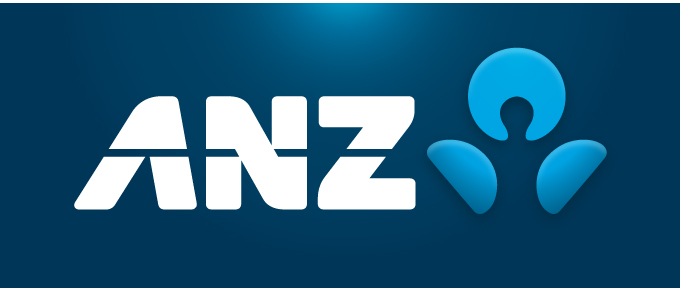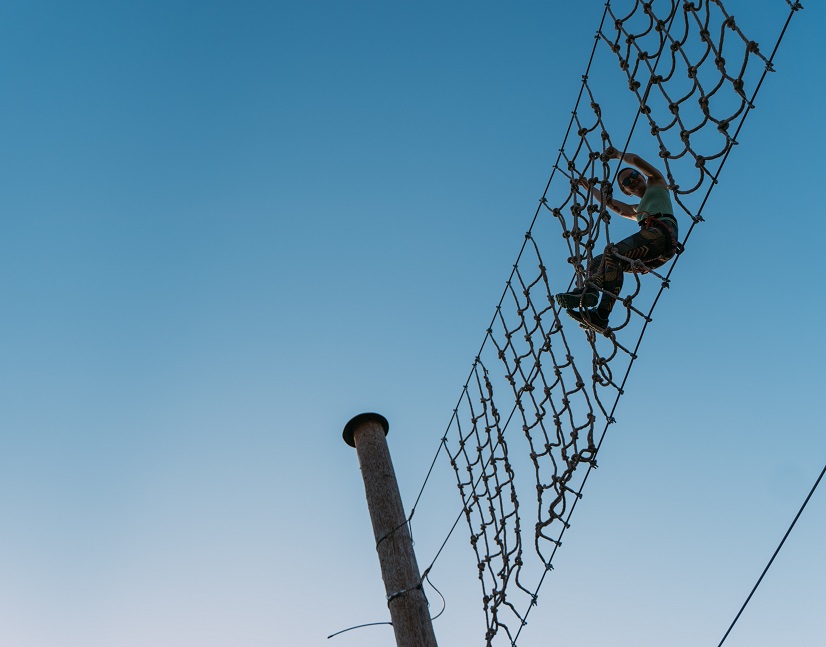
Flexibility to the forefront as finance grapples with D&I
Diversity and inclusion is fast shifting from an aspiration to a core strategy, as companies across industries engage more deeply with the value of a diverse workforce. In October, KangaNews hosted an ANZ-sponsored roundtable, bringing together a range of female leaders to explore some of the challenges of elevating women and the risks firms face should they ignore the value of diversity.
Joined by a group of fixed-income investors and ANZ’s chief economist, the participants explore liquidity conditions, rates direction, the ongoing impact of QE and how new-issuance patterns will affect relative value. The big-picture view is of the calm before the storm, as market participants anticipate a bumpy road ahead for monetary-policy normalisation in Australia and globally.
D&I DEVELOPMENT
Craig To what extent has focus on gender equality increased in the last decade, and how integral is it to how businesses operate?
DALITZ Without doubt there is more awareness of the importance of gender diversity. In the last decade or so, within the banking and finance sector organisations have put in place appropriate plans and strategies. However, apart from C-suite level – where in many cases remuneration is appropriately tied – the ‘why’ is not sufficiently well understood.
Related issues have been particularly revealing during the pandemic period. Almost every business continuity plan (BCP) had a line item for ‘pandemic’, but none really gave thought to what it should entail – it was a BCP recovery site that turned out to be completely redundant. Over the last year, business leaders have learned they need to be curious about risks, strengths and weaknesses, and opportunities and threats.
Businesses should be viewing gender diversity through the same lens – it is about risk management. You don’t field a football team with everyone playing the same position – you must field every position for it to be a winning team.
There is a lack of understanding and awareness of the potential of gender diversity. There is considerable upside to having diverse views, experiences and knowledge to help businesses solve problems more thoroughly and efficiently. I don’t believe this has been nailed by business yet.
VENKATESAN I worked on a trading desk in London 15 years ago and I was the only woman in a team of 51 men. I found it incredibly hard to socialise. I was different and I always had to make the effort to be included.
Today, things have changed dramatically for the better. More women work on trading floors. The larger firms are leading the charge on diversity through quotas, increased focus on hiring more women in graduate intakes, ensuring a better interview process through an appropriate panel of interviewers, and resetting their values. This is having positive impact on their culture.
Have we achieved all our milestones? Absolutely not. Because of the gap that has been created, there is still a long way to go. One of the main issues is that, instead of women climbing the ladder, we lose them between middle and senior management. There are clearly different ways and means to address such challenges. In fact, I recently saw [ANZ chief executive] Shayne Elliot discuss ANZ’s return-to-work programme. A notable change compared with 15 years ago is the extent to which we are focused on building awareness and on encouraging women to come back to the workforce.
RAMOS Markets have changed more than we realise. Initially I worked on the buy- and sell-sides in London and, whether it was in the dealing room or at an event, I was often the only woman in a room of men. But a bigger and more accountable capital market – cultural diversity, as well as gender – was already high on the agenda.
I became so used to London’s diverse cultural mix that it was a shock when I moved back to Australia nine years ago. It was obvious we were not in line with major markets around the world.
Now I am seeing banks creating more opportunities for women and becoming increasingly aware of the ways in which they hire. What we need to be aiming for is a more even balance. I’d like to look across the industry and see it replicate the more-or-less 50-50 split of society.
I have seen, through the work we do on the desk, that diversity in teams creates new ideas, communication styles and deeper relationships with clients. If we all look and act the same, we will not appeal to the broadest possible client set. Clients say they want to work with a team that is as diverse as theirs – and it is important for banks to listen.
FAN I started my career in Melbourne during the global financial crisis and subsequently moved to Hong Kong about nine years ago. It was at that point I started the diversity and inclusion (D&I) committee for ANZ in Hong Kong.
Things have changed drastically during this time. Back then, we were trying to understand what was possible within a small community. Fast forward to today, we have several different committees and a diversity council focused solely on women’s leadership and D&I. It has become a very powerful tool with which we provide regular training for staff in Hong Kong.
We have also seen a change in policy, for example the requirement to include women on interview panels. All of this raises awareness. This all connects with the ‘why’ that Jen Dalitz mentioned. Slowly, and after a number of years, people are starting to understand the why. We still need more education and marketing, but there is more awareness.
It takes significant work to change culture. Even in Hong Kong, businesses are very traditional and boards remain male-dominated – as does banking. But I have had many good female role models, including Christina Tonkin. There are more women paving the way; we benefit from greater support to pursue our ambitions.
MANTELL Celsus is the private partner and commercial operator of the Royal Adelaide Hospital. We recently undertook a A$2.2 billion (US$1.6 billion) refinancing, which was the first green and social loan in health globally as well as the largest environmental, social and governance (ESG) loan in the Asia-Pacific region. As a result of the refinancing, we reduced our banking group to 18 from 28 lenders.
It is not unusual for me to be the only female in a room of 58 people when the subject is finance. But I find it extraordinary coming from a health background, where it is much closer to an equal gender balance.
Even as a female chief executive, I am definitely in the minority. I have a team of 10, made up of five nationalities – which I’m extraordinarily proud of – while 25 per cent of the executive team is female.
The lack of gender diversity in more senior roles at banks surprises me. I have worked with many enthusiastic people in the green- and social-loans space and I think it is a travesty if we can’t work out how to retain people through to more senior ranks.
Craig Was gender diversity a factor when it came to reducing the size of the banking group?
MANTELL It wasn’t a driver but only because the representatives were put forward by the banks. Managing a group of 28 makes it much harder to drive the agenda. But now our banking group is smaller we can focus on more direct contact and interaction and exert some influence as we go forward.
Craig Improving D&I across the workforce is clearly a growing priority for many organisations – including ANZ, which has recently introduced a women in leadership workstream for its markets business across the globe. What does the workstream aim to achieve?
MARRIOTT We have seen progressive change through industry initiatives but also organic developments. Our data show ANZ is making good strides but we think we can do more. We thought about how to increase the cadence of women in leadership throughout our markets business and therefore instigated a workstream.
The workstream comprises senior executives and leaders. Initially we ran an informal series canvassing feedback from male and female employees across the organisation, in Australia and Asia. We used the information to seek out common themes.
One discovery was that we needed to review and refine the language we use in our recruitment processes. Now, when we advertise for new roles, we use a screening process to ensure we are using language with less bias and that is more likely to entice women into the industry.
We also introduced a mentor-mentee programme catering for associate director and director level women across the business. We have around 45 participants across Australia, New Zealand, Asia Pacific, Europe and the Americas.
This feeds into our sponsorship programme, which supports moving directors into executive director roles. ANZ’s broadest slice of female employees is at the middle-management level and we are seeking to get women into strategic leadership roles across the business.
We run a monthly speaker series, where we invite subject-matter experts to speak on a range of topics. These have been running for four months, with great success. We have had internal and external speakers and have found bringing in the external perspective has taught us important new skills.
RAMOS We have invested a lot of our time in the initiative over the past 18 months and the people working on it are enthusiastic and passionate about having hard conversations about the issues that exist.
Topics include the career lifecycle. People need different forms of support or guidance depending on where they are in their career. It cannot be a one-size-fits-all approach or the same answer for everyone.
The career lifecycle starts by looking at graduate level and working out what our graduates need to feel supported. Then there is the mentoring programme, which helps provide additional skills – technical skills or how best to tackle difficult clients or colleagues – in the mid-section of the career. Next comes positioning for the step-up to senior management, ensuring the right skill set is there to take on a more senior level, which might include raising profile or learning about strategic networking. It is all linked to adopting a cultural change – because we need business leaders, senior management and desk heads all to be committed to this. Our workstream is passionate about ensuring the people we involve in hiring and promotion decisions take the issues raised on board.
MARRIOTT Companies used to rely on quotas. They targeted women in leadership according to the demographics of university graduates. However, it demonstrates why having diversity of skills, personality, decisions and perspective really does help businesses and teams to outperform.
It is important we use this as a vehicle to educate on the ‘why’ – it has been liberating to bring more people along on the journey. Most of our mentors are males and males working with young females has been as much an education for the mentors as the mentees.
DIVERSITY BENEFITS
Craig How much incremental benefit is there for organisations from the introduction of programmes along the lines of the one ANZ has in place?
MCCULLAGH It is great to see such a plethora of initiatives. However, my experience from the last 40 years is every time you think you’ve nailed it, you haven’t. We thought we had it nailed in the 1980s with equal-opportunity legislation. The fact that we thought legislation would be sufficient shows how naive we were.
There is no silver bullet, nor is one thing going to change it. It needs to be a huge group of initiatives to bring about this kind of change.
I am impressed by some of the initiatives being put in place by the big-four banks. They are definitely a step in the right direction. I worked on the sell side for 10 years and it was very disheartening to see a backward move in so many organisations on gender diversity, making a very difficult environment for women. Women voted with their feet. They wouldn’t even apply for roles straight out of university, making it impossible to find women even at entry level.
Language solves the issue of women feeling like the role might not be suited to them. From where I sit – on the board of a super fund – I like to see initiatives at macro level and I think we can learn a lot from some of the initiatives introduced for climate-change mitigation. Climate commitments contain a drop-dead date of 2050 – and they require commitments to be set along the way to reach this date. Targets keep commitments on track.
This is missing from some organisations’ diversity policies. Perhaps we need to set the commitments for 40:40 and then set targets for all levels of the organisation from entry to senior-level roles that ratchet up every few years until the 40:40 targets are achieved. Companies can introduce women’s committees, for example, but they also need men to come on the journey for real change to occur. They also need buy-in from the board and the executive leadership teams.
Briefly on the ‘why’, the latest iteration of Credit Suisse’s Gender 3000 report into company performance was released at the end of September. It offers insight in cold, hard financial metrics. By now, we could have solved the why but we always seem to have to backtrack.
DALITZ The why has gone through so many iterations. It is a journey and the imperatives have changed over the last 40, 30, 20 and 10 years. Society around us has changed.
This has been a difficult year for everyone, yet the traction on women’s voices achieved in less than a year is phenomenal. Women, young and old, are expected to be polite and say nothing – they have now decided en masse to say how it is. I have no doubt we will see more of this.
VENKATESAN The fundamental objective of a good retirement policy is to enable people to retire with adequate savings and lead a reasonable lifestyle. However, the gender super gap in Australia is well documented: women retire with 47 per cent less super than men, and older single women over the age of 55 are becoming the fastest-growing homeless population.
The traditional superannuation system supports one model, which is linked to continuous paid work and doesn’t consider the fact that women have different life cycles and approach risk and financial decision-making very differently. Today, one billion women participate in the global workforce and, in addition to holding down highly demanding jobs, they are primary caregivers to children and, often, aging parents.
In Australia, women comprise 47 per cent of the total workforce, also accounting for 69 per cent of all part-time employees. In addition to being the largest contributors to the gig economy, they have sporadic or nonlinear career trajectories due to family commitments. This means the current superannuation regime can never work in their favour, resulting in lesser savings.
Most women also outlive their partners and need larger savings to fund their retirement and healthcare. Add the gender pay gap to this and the gender retirement gap is larger than ever.
While super funds have continued to grow in size, there is more to be done in innovation or progress on member outcomes. This was also made clear by the Hayne Commission report.
Craig How does the composition of ANZ’s senior leadership influence its gender targets?
TONKIN With a career largely in project finance and loan underwriting, I was frequently the only female negotiating transactions in the room. When I entered leadership in around 2000, I was one of the few female leaders with P&L responsibility in a specialist field. I agree that we have come a long way in driving diversity and inclusion, but there is still a long way to go.
During my 16 years at ANZ, I have seen a considerable positive shift driven from bottom-up recruiting practices and top-down target-setting practices. The fact that our graduate programmes are gender balanced and have been so for well over a decade is incredibly important to building leaders of the future.
We have been extremely lucky to have very strong leadership at board and managing-director level. Meanwhile, ANZ has specific targets throughout the bank. This includes signing up to HESTA’s “40:40 Vision” initiative, which aims to ensure diversity in executive leadership in ASX 200 companies. We are proud to be the only Australian bank among the first 10 signatories.
ANZ is targeting 34.4 per cent of women in leadership by the end of financial year 2021 – we’re currently sitting just above this, at 34.8 per cent. Shayne Elliot has a gender-balanced team and his four reporting lines have gender-balanced teams underneath.
The corporate finance team that I lead at ANZ is comprised of around 350 people across 11 jurisdictions covering the complex structuring and loan-underwriting space, including areas such as project finance, export finance, asset finance and leveraged finance. These sectors have traditionally been male dominated.
What one typically sees is a ‘marzipan’ layer in the middle, between the emerging or growing and established or experienced management layers. Now, with the focus that Luke Marriott outlined regarding our diversity in financial markets workstream, we are looking to drive better balance, and D&I, in the specialist P&L areas across financial markets and corporate finance. These are the kinds of roles being undertaken by Jenny Fan in Hong Kong and Suzy Ramos in Sydney.
Women are also strongly attracted to working in the growing area of sustainable finance – it has been this way for some time. Katharine Tapley, head of sustainable finance at ANZ, built this business from about 2015 and is one of a number of exceptional women leading innovative thinking in this area of financial markets.
Gender diversity is also better for risk decisioning. In some areas, such as carbon transition and new technologies, I believe diversity improves innovation. We are also seeing this in the economy in general though some of our customers. This includes Fortescue Metals Group, for example, with Elizabeth Gaines and Julie Shuttleworth as chief executive and deputy chief executive respectively.
Sustainable finance is one of the fastest-growing business lines within the corporate finance area at ANZ. It has been a marvellous area for which to hire, often – but not exclusively – women educated in science, technology, engineering and mathematics (STEM). These are hires entering the finance sector for the first time.
We have seen some change already, but I think we will see more in the next 5-10 years. The transition to net-zero carbon is also about an entire industry approach – for example, plastics, waste and transportation. The real innovation in industry is that diversity is a catalyst for change within organisations. We have a golden opportunity in the finance sector to take advantage of the changing dynamic of the economy.
Craig How did the ANZ emerging leaders at this roundtable discussion come to the financial-services industry and how do they think more women can be encouraged to follow this route?
FAN I found my way through sponsorship. I previously worked in transaction banking before joining loan syndication in corporate finance. I was identified by a senior manager and offered the opportunity to receive training to join the team.
It is largely about sponsorship and opportunity. It is important to offer training to women for specalised roles. Luke Marriott has touched on some of ANZ’s initiatives and the bank also offers leadership training. I have attended two leadership courses – one by Women in Banking and Finance (WiBF) and a second run for ANZ employees called ChangeUp.
There has been a change in the focus placed on the kinds of training topics given, as well as the style. They previously focused more heavily on providing people with specific skills, for example negotiation. More recently, they teach ways to recognise and understand different types of personalities – your own and those of colleagues and clients – and how to connect and communicate better. There is more of a focus on confidence, effective networking, finding balance, resolving conflict and recognising your strength, compared with just a few years ago.
There is no doubt having more vocal females definitely helps. The tone from the top is important to share the message, as is sponsorship and facilitators.
RAMOS I came into the industry via an old-school route – studying finance at university – and from there I gravitated toward financial markets. It didn’t concern me that it was male-dominated because I was brought up in an environment where I was encouraged to do what I was interested in.
Nowadays, it is not about being a good mathematician – it is about appealing to a wider cohort, demonstrating that finance can appeal to a range of skill sets and personality types. The broader the skill set and range of personality types we have coming into the industry, the better we can do business, service clients and look for opportunities. Even if finance isn’t your background, but you are a good communicator, networker or negotiator, it is now more accepted that the technical aspects of finance can be learned.
It is not only the finance industry where diversity can be better. Technology and engineering also must lift their game. Demonstrating to women that there is a multitude of skill sets we can use – that it’s not just the typical, traditional skills from 10 or 15 years ago – will help people to enter the industry.
The life process itself – parenthood, for example – teaches new skills that can benefit work. To attract more women into a typically male-dominated industry, we therefore need to demonstrate a desire to find candidates beyond those that tick the traditional boxes.
Craig What is WiBF’s view on the extent to which pathways have changed for women coming into the industry?
DALITZ WiBF’s members operate across the full spectrum in banking and finance – banks, treasury, government, investment managers, super funds, insurers, and professional-services firms, as well as some aligned companies that service the industry. I hear the comments Suzy Ramos makes echoed repeatedly, particularly by investment banks grappling with the fact that there aren’t enough women to fill the ‘traditional’ pipeline.
There has not been much change in awareness over the years, but the language has changed and this has made a significant difference to banks’ abilities to do successful deals. Communication is a big part of this. I have also started to see subtle differences in the belief that it takes a long time to change culture.
One noticeable shift is in the appreciation of essential skills deemed necessary to undertake deal-making, for example the ability to communicate, engage and have people follow you. These were traditionally known as soft or female skills – they are skills that were not essential to business leaders but were instead the domain of human-resources departments.
Now, the companies that understand the benefits are broadening recruitment strategies. They are not just looking for STEM graduates but at students that can demonstrate problem-solving skills across a range of other subjects. Philosophy is one and technology another, given its relevance to markets because of the way trading interfaces work.
I continue to see companies placing emphasis on formal university qualifications in specific disciplines such as applied mathematics, but this is partly due to the competitive nature of the area. The strategy also depends on leadership. It requires leaders who are prepared to think a bit differently – not only to solve the problem but to understand the problem they are solving. This is the crux of it.
VENKATESAN I had a slightly different experience. In 1999-2000, when I was in investment banking, I had female colleagues with philosophy and literature backgrounds.
DALITZ I have heard the same thing: that around 10 years ago something happened to narrow the field.
VENKATESAN It seems mostly to be related to supply and demand. The more candidates there are for roles, the more challenging it is to hire. But people also end up selecting people like them. Therefore, the focus on having a diverse counsel and a mix of skills is so important for interviews, so you are not recruiting your shadow.
I previously worked at an Australian major bank where there were more female than male employees. The issue isn’t attracting women. It is about keeping and supporting them to progress. Here, it is not just an issue of diversity but one of inclusion.
There is a lot of focus on diversity, which is great, but we must ask ourselves if we are doing enough on inclusion. From a capital-markets perspective, it is about whether or not women see themselves to be a natural fit. Trading floors have often been seen as places dominated by loud men. Today, more women work in trading roles.
The larger firms are leading this change, which is having a positive impact on their culture. It is therefore important to change perception to enable more women to thrive – to be able to keep them, not just attract them.
My daughter is in year seven. For the first time, I understand financial literacy is on the curriculum as an elective from year eight. These topics are often either not discussed or not seen by society as female topics. It is great to see this changing.
Shared loan high on women’s wish lists
Women in capital markets say an important breakthrough would come if the burden of household and family responsibilities was more equitably shared. Attitudes to flexible working may have been changed by the pandemic, but women want to see the gains maintained.
MCCULLAGH The thing I would change in this area, where I think companies can play a strong leadership role, is to support the equal sharing of family and household responsibilities including, of course, childcare.
Until this happens and men are willing to step back from their job for a period to participate in child-rearing, the imbalance will continue.
I would like to encourage innovative thinking along the lines of what occurs in Scandinavia, where companies grant blocks of leave. It is not compulsory but it offers the opportunity to take time out to be with their families, whatever their gender.
HEALTHCARE VERSUS FINANCE
Craig How do experiences in the healthcare sector differ from those in financial services?
MANTELL Health tends to be female-dominated but as you progress through the ranks there are fewer women available in the middle-management pipeline. This means it is often men who are hired for senior roles, despite a smaller male pool.
I would like to think roles are awarded based on being the best person for the job, but there are limitations to the pool. In many cases, it is smaller because people make life decisions. But it is also important to try and retain people in the system. Given the amount of time and resources organisations invest in upskilling people, it is important for them to be more inclusive – including thinking about things like flexible working hours.
In my current role as chief executive of Celsus, we have difficulties recruiting executive roles in South Australia. It is tricky to recruit and retain people for roles that are not based in Sydney or Melbourne. Often, either people do not want to work in Adelaide or they want to work here during the week and go home to New South Wales or Victoria at the weekend.
When you have a small leadership team and require people on the ground to deal with issues, working out how far you will go to get someone to fly-in fly-out while others always must stay and cover being on call is tricky. We took 14 months to recruit our chief financial officer. The pool was huge, but most wanted to work remotely or demanded far more money than for a comparable role in Sydney or Melbourne.
We ensure there is support for people who need to travel. Home for me is Perth, for example, and I have been flying in and out of Adelaide for seven years. Celsus has been very supportive, to the extent that I can work in either city. When trying to recruit and retain appropriate staff, it is crucial to consider what else matters.
COVID-19 has taught us that if we have a good team that understands what is required of them and everyone is clear on their KPIs, they can work from home – provided we offer a suitable environment and the right tools, and we follow up on what our employees want and what the organisation needs. Inclusiveness has become equally important to find and drive the best workforce for the organisation.
Craig Chief Executive Women (CEW) recently released its senior executive census for 2021. What were the most salient findings from the survey? Would you say the results overall indicate female representation in executive leadership teams is improving at an acceptable pace?
MCCULLAGH I was struck by the lack of women in promotable line roles. I compared CEW’s report, which has an Australian focus, with the Credit Suisse Gender 3000 report, which looks globally, and the stats are almost the same.
In shared-services roles in executive leadership – roles that usually do not get promoted to chief executive – globally women comprise about 33.7 per cent, while in Australia the composition is 36-40 per cent women. Meanwhile, in the chief executive promotion pipeline roles, the CEW report has 14 per cent women and Credit Suisse Gender 3000 has 16 per cent women.
The statistic I found most shocking is that there are 36 companies in the ASX 300 that have made a 40-40 target commitment but have no women in promotable line roles – and one is a big-four bank.
For me, lots of things are going wrong, but at board level it is going right. The thing that has always struck me about board level is that it is a team so it is not the case that you must be the best person for a role. It is about being the best person for the team.
A very interesting concept was recently floated around a board table that I sit on. Someone asked why we weren’t thinking of the executive-leadership team as we do about boards. As far as executive leadership goes, we think positions must be awarded on merit and a person must be the best for the job. However, the perspective of seeking out the best person to fit a team provides a refreshingly different way to think about it.
I was quite shocked by some of the finer detail in the CEW report. I was a lateral hire into investment banking and I very much support this as an approach to improving diversity. I moved from oil and gas, and utilities into investment banking.
One of the areas where it is going wrong is that many men don’t know the good women. Women often know the good women. Once I conducted an experiment for a client. We picked three men who were very vocal about the fact that they had been promoted based on merit and there was a lack of women to promote. We went to their LinkedIn profiles and, rather tediously, counted their network. The three men had respectively 10, 11 and 14 per cent women connections. These men needed to fix their networks. They just don’t know enough women.
A friend of mine, a talented woman who works in climate change, was approached by a contact who said they wanted to make sure they had a diverse interview panel for a job opening. They didn’t know any women in sustainable finance or banking. Her reply was that she had just finished a breakfast function with 62 of them. He was shocked to hear so many women with these skills existed, but he clearly did not have the connections.
The other thing to fix is the streaming. I have seen organisations with a 50:50 hiring policy but the men are being streamed into banking and investments while the women are going into human resources and shared services. In another example, two graduates were appointed from university in the same intake. The woman was streamed into human resources and the man went into corporate finance. A couple of years later, both were made redundant – the young man with 80 per cent more redundancy pay than the young woman.
I challenge every man to examine his LinkedIn network. If it contains less than 40 per cent women, there might be a problem.
MARRIOTT It’s an interesting concept. We are developing a male ally programme as part of the Women in Leadership workstream. When we talk about women in leadership, the men sometimes start to glaze over. I find nothing more annoying. We have been thinking deeply about ways to approach this – and ‘fix your network’ would be a great place to start.
“The broader the skill set and range of personality types we have coming into the industry, the better we can do business, service clients and look for opportunities. Even if finance isn’t your background, but you are a good communicator, networker or negotiator, it is now more accepted that the technical aspects of finance can be learned.”
TONKIN One thing is for certain: male line managers at ANZ, particularly within the institutional bank, will have shortened career lifespans if they do not broaden their networks to attract a diverse and inclusive workforce.
I would also argue this applies to women in line roles. We have seen a considerable shift at the senior layer in our own organisation and have also seen the shift at the front line with new talent coming in across the analyst-to-director layers. But the definite challenge is in the middle layers of management: ensuring we have diverse leaders for our specialist P&L teams, with the right skills and experience levels.
My corporate-finance team has been striving to ensure we do a much better job putting in place appropriate succession pathways that identify diverse leaders with specialist skills. We strive to make sure we have not just one but a couple of female successors. This really helps us build the executive director and head of leadership levels for specialist roles.
DALITZ On the LinkedIn networking audit, another good approach is to examine your calendar over a period and look at the number of coffee meetings you have as well as the number of formal or informal mentoring opportunities you facilitate. There is quite a body of research to show that men, particularly those from a private-school education background, will be more proactive in seeking out informal mentoring opportunities.
Many leaders have found that their meetings provided a disproportionate amount of door-opening opportunities for men than women.
As an outsider, but as someone who works with ANZ in this space with WiBF, I do not think it can be underestimated how important it is for an organisation to invest – money, not just time – in programmes such as those offered by WiBF. I have observed ANZ, more so than most organisations, offer a financial investment to drive change.
If we were driving any sort of major change initiative in an organisation, how would we expect to deliver tangible outcomes without budget being allocated to the significant change programme? It just would not happen. Yet for gender change programmes, this is – for the most part – what happens.
WiBF is only one of the organisations ANZ supports in this area. The bank supports many of them because it also recognises that with the whole array of different initiatives it is not a one-size-fits-all approach. Women are not homogeneous. Women are as diverse as men. It takes true commitment and I challenge more organisations to think about this.
VENKATESAN Put your money behind your vision. I couldn’t agree more.
MANTELL I am mentoring two men through a health-management programme at the moment. One is just beginning his management pathway and the other is in a middle-management role. I believe mentoring is an important component of educating everyone about D&I. They have both said they appreciate the opportunity to work with somebody who works differently.
It is also important that we mentor men so they can understand why D&I is important, and not just mentor women to be able to promote them. It is vital to bring men along on the journey, so they get the whole picture as well.

WOMEN IN CAPITAL MARKETS Yearbook 2023
KangaNews's annual yearbook amplifying female voices in the Australian capital market.













